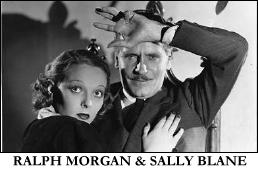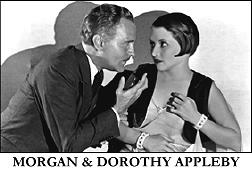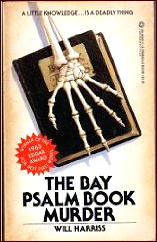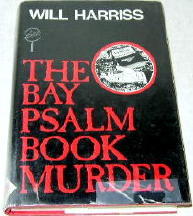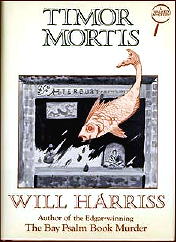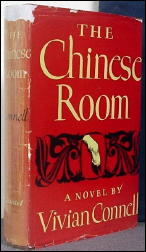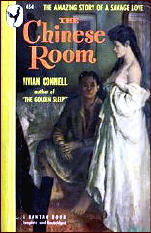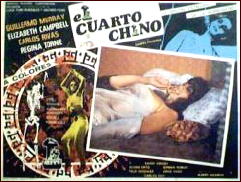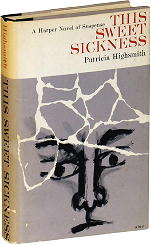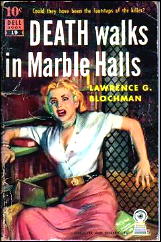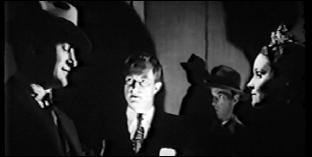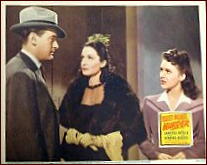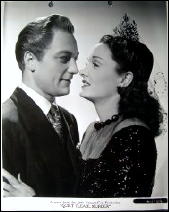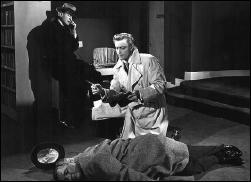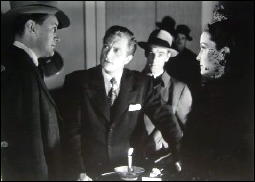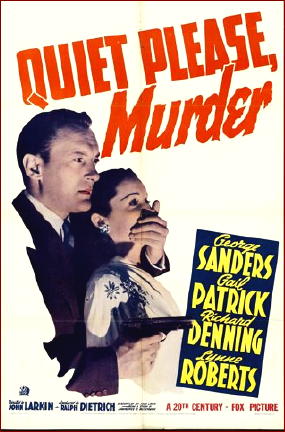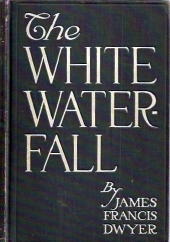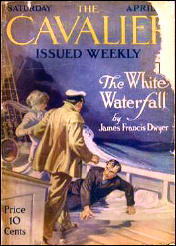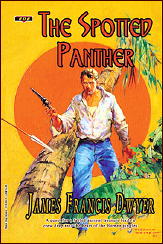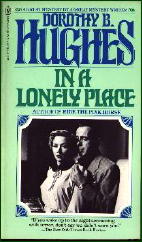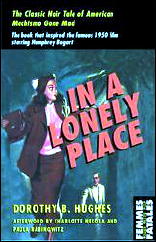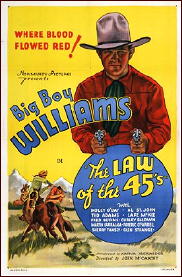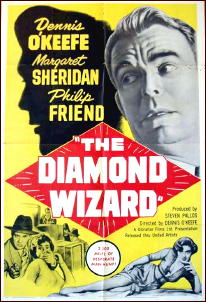Reviewed by DAVID L. VINEYARD:
LOUIS JOSEPH VANCE – Terence O’Rourke, Gentleman Adventurer. A. Wessels Co., US, hardcover 1905. Reprinted as The Romance of Terence O’Rourke, Gentleman Adventurer: Bobbs-Merrill, US, hc, 1907; Grosset & Dunlap, no date (shown). Also: Grant Richards, UK, hc, 1906. Silent film: Universal, 1914. First appeared in The Popular Magazine, circa 1904-05. (See comments for additional information.)
In 1904, ten years before he would pen the first adventure of Michael Lanyard, the Lone Wolf, Louis Joseph Vance was concerned with the adventures of another American in Paris, Colonel Terence O’Rourke, an American soldier of fortune, down on his luck and about to face a change of fortune.
Now good reasons why a man may be out of sorts in a Paris springtime are few and far between; but they exist; O’Rourke had brought his with him … his supply of ready cash was not alarmingly low; it was nonexistent —
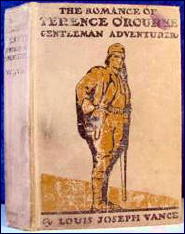
In short order he pawns a watch presented to him for bravery in a South American revolution, finds a casino, loses every penny, is challenged to a duel, pursued by a mob, and leaps into a carriage to escape — where he meets a beautiful woman, Beatrix, the Madame la Princess de Grandilieu, and by sheer luck — the kind of thing that was always happening to adventurers like ‘the O’Rourke’ — utters the secret password that leads her to believe he is the man she is supposed to meet.
In the hands at a romancer like Vance, that’s all that is needed.
O’Rourke learns her brother has plans to lead an army into the Sahara and make himself an emperor of the wastes… There is only one problem with his plan. The Emperor is a coward and a fool, known as ‘le petit Lemercier,’ the laughing stock of France for his foolish exploits.
“Here,” he said, drawing O’Rourke’s attention to a spot on the west coast of the continent, “is Cape Bojador. Here again,” moving his finger a foot upon the coast line, “is Cape Juby. To the north lies Morocco; to the south lie the Spanish Rio de Oro possessions. But between the two capes is unclaimed land. There, messieurs, lies the land that shall become our Empire of the Sahara. There we shall establish and build up a country even greater than our France!”
A grand scheme, one O’Rourke would likely by pass though if not for the beautiful Beatrix. He teams up with Daniel ‘Danny’ Mahone, once his batman, and takes command of the army of the Emperor of the Sahara. But no one asked the local nomadic bandits the Tawareks (Tuaregs).
“They are the lords of the desert — inhabitants of the Sahara proper — a branch of the Berbers: perhaps the root-stock of the Berber family tree… They infest the caravan routes: in a word, they’re pirates, and rule the country with a rod of iron.
Beatrix is kidnapped, and O’Rourke rides madly in the desert after her and her Tawarek captor…
O’Rourke fired again, almost at random, risking everything, even the woman he loved, in the necessity of saving her from what was, if not death itself, worse than death.
… her husband Prince Felix dies, and O’Rourke rescues the lady and leads a desperate battle, and bloody retreat.
But he doesn’t get the girl. After all, she is a princess and he is a penniless adventurer — besides, his adventures were just beginning. Two sets of them flowed from Vance’s capable pen.
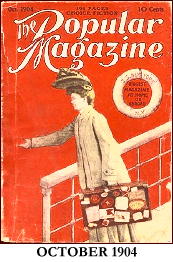
O’Rourke adventured in the pages of The Popular Magazine where he wielded his sword and Mauser with deadly skill. After “The Empire of Illusion,” the series of stories which make up the tale comprising the first half of the book, he finds himself in a Ruritainian adventure rescuing a kidnapped prince and dueling an evil prince. After that he is discovered preventing a revolt against the British in Egypt.
Always his fist, his sword, and his gun are quick to be employed in a good cause; always he just fails to make enough to reclaim his true loves hand; always he finds a new adventure.
Beatrix, bless her, would have him anyway, but O’Rourke will not impoverish her. He’ll have a fortune for her or die trying. And he frequently comes perilously close to doing just that. Not that he is averse to other beautiful women. He’s loyal, not dead.
“‘Tis yourself that would be the squire of dames is it, O’Rourke?” he said. “Faith, but it seems that ye will not. Let us go out and think about this thing — for, if ever a woman stood in need of a man’s strong arm … ’tis this countess, and upon this very night — I’m thinking.”
Eventually he inherits one of those convenient fortunes from one of those equally convenient relatives that die and leave such fortunes in tales of adventure and romance, battles a deadly Duke on a vertiginous stairway, and sends him to hell through a doorway that leads only to a precipitous plunge a la David Balfour’s near fate in Kidnapped. He wins his ladies hand and lives happily ever after.
Once she told him: “The frontier is not far, sweetheart. Once over that, beyond immediate pursuit, we will stop at an inn and summon a surgeon. Can you bear, O my dearest, to wait so long?”
“I — Ah, faith! I could endure a thousand deaths — and yet live on — in your arms …”
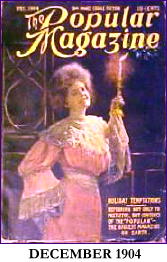
Rudolph Rassendyll couldn’t have said it better to Princess Flavia while freeing the prisoner in the castle of Zenda.
Of course Vance couldn’t keep a good man down, and O’Rourke returned in a prequel detailing his adventures with Danny before his fateful meeting in Paris. This was 1905 and only the Scarlet Pimpernel managed to keep adventuring after marriage. At least Beatrix was spared all those kidnappings suffered by Bulldog Drummond’s wife.
The pleasures of O’Rourke’s adventures are many. Vance was a novelist before he was a pulpster, and his characters are fully developed human beings with believable motives, actions, and consequences for their actions. O’Rourke may be a pulp superman, but he is a believable superman, and his feats of heroism are just within the bounds of probability, and he is never better than when the odds are impossible and the moment is desperate.
Terence O’Rourke, Gentleman Adventurer can be downloaded for free or read on-line at Google Books in PDF or EUPB format. A more detailed account of his life and adventures can be found in Robert Sampson’s Yesterday’ Faces: Violent Lives, Vol. 6 (Bowling Green University Press).
O’Rourke was without food or water, without protection from the sun; he had nothing to depend on but this camel, his Mauser, and the high, bold heart of him.
For us and O’Rourke that is enough. A sword, a gun, and the ‘high, bold heart of him.’ What more can an adventurer ask, even the armchair kind?
Editorial Comment: For anyone wishing to read a contemporaneous review of this book, there is one online at The New York Times website. (A subscription may be required.)
I have not yet confirmed them, but it seems likely that these are some of the stories that were combined to create the overall novel:
In Which O’Rourke Serves the King (nv) The Popular Magazine Aug 1904
In Which O’Rourke Saves a Throne (nv) The Popular Magazine Oct 1904
In Which O’Rourke Pays a Debt (nv) The Popular Magazine Nov 1904
In Which O’Rourke Sheathes His Sword (nv) The Popular Magazine Dec 1904
